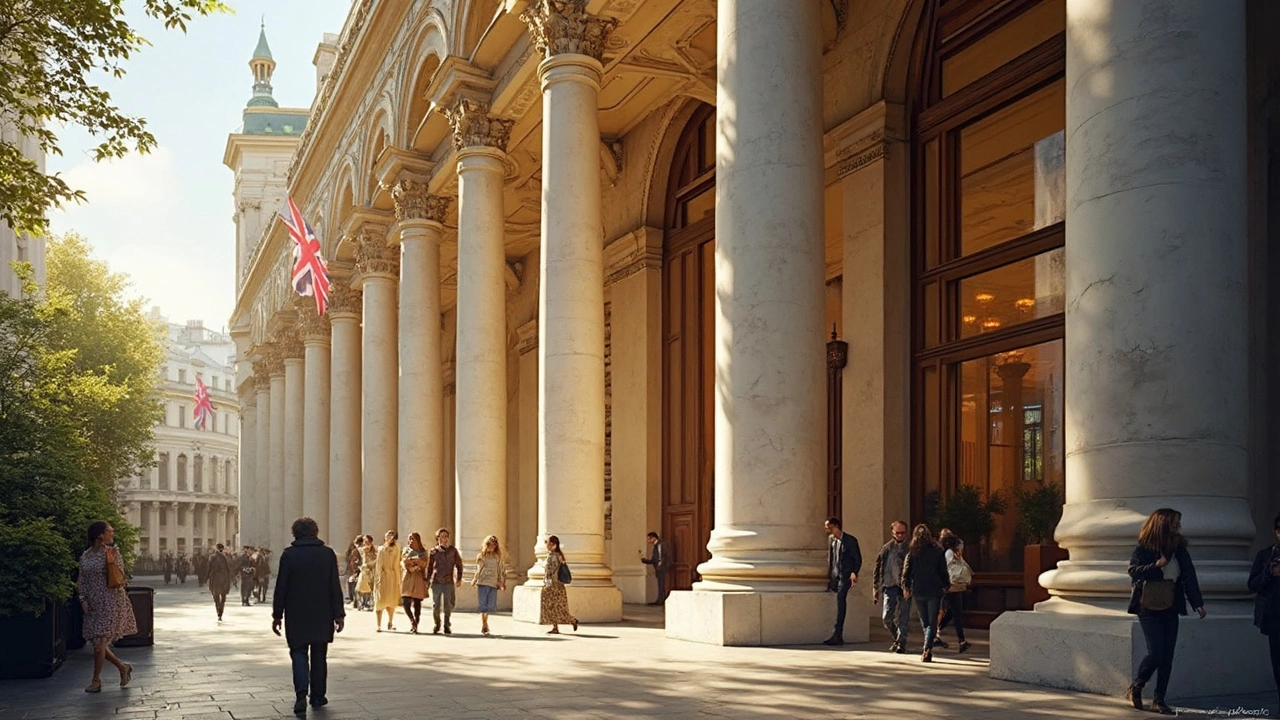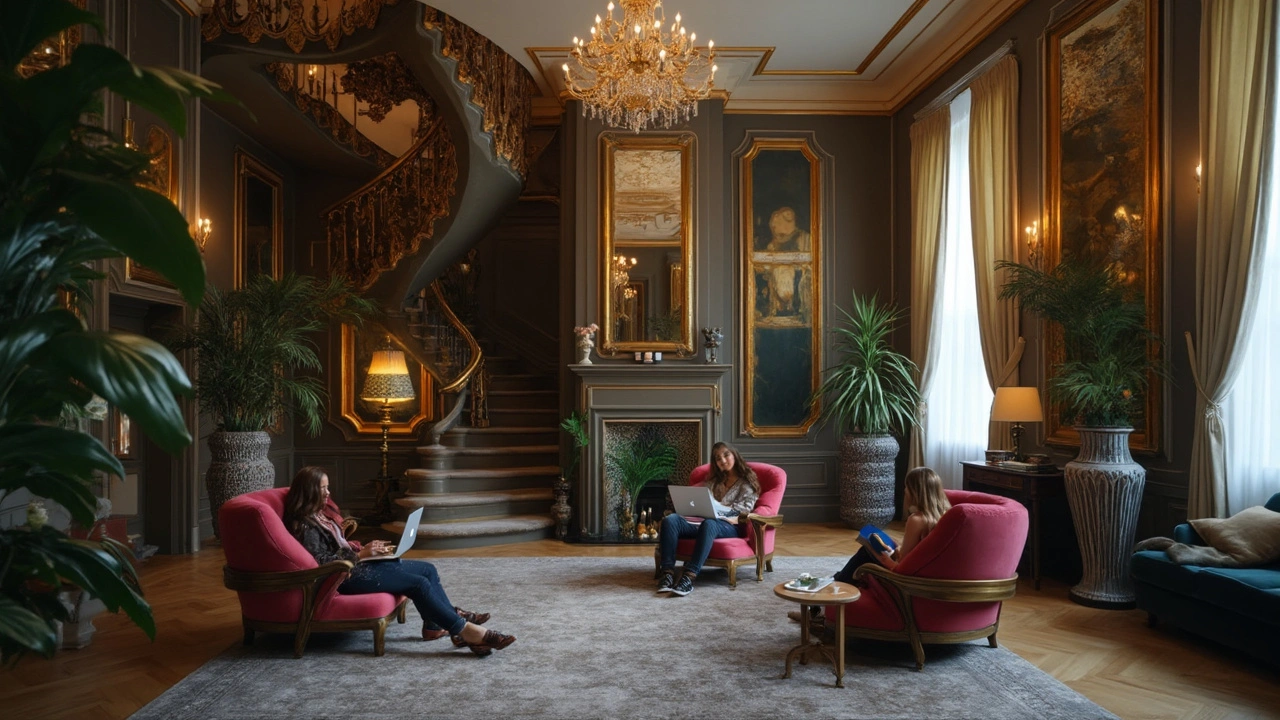Baroque Architecture: Legacy and Impact on Modern Design
 Jun, 7 2025
Jun, 7 2025
Ever walked into a modern hotel lobby and thought, "Why does this feel so dramatic?" Turns out, a lot of that punch comes straight from baroque architecture—a style that cranked up the volume on design back in the 1600s. People think baroque equals old churches or palaces in Europe, but its fingerprints are all over our cities and even our homes right now.
Baroque is all about big gestures: grand entrances, curved shapes, and that wow-factor you remember after you walk away. Ever seen a staircase that looks too cool for boring offices? Chances are, that's a little nod to baroque style—a trick architects still use to make first impressions last.
It’s not just about the looks, though. Baroque made spaces feel larger, brighter, and more inviting—useful tricks if you want your tiny apartment to feel, well, less tiny. Designers still borrow these moves: bold contrasts, lots of light, and smart use of curves—all to pull you in and make you pay attention.
- Baroque: More Than Just Ornate Buildings
- Where Baroque Lives in Modern Cities
- Design Tricks Borrowed From the Baroque
- Making Baroque Work Today
Baroque: More Than Just Ornate Buildings
Baroque architecture isn’t just about heavy gold frames and dramatic church domes. It started in Italy around the late 1500s, but its influence went way past religious buildings. The style popped up in city halls, theaters, public squares, and even regular homes (for those who could afford it). The main point? Baroque was designed to grab your attention and pull you in—think bold curves, wild contrasts, and spaces that feel bigger than they are.
Think of St. Peter’s Basilica in Rome—classic baroque with its massive columns and eye-popping details. But the movement wasn’t limited to Catholic Europe. Take a look at the Winter Palace in Russia or Schönbrunn Palace in Austria. Those buildings scream baroque, but each country put its unique spin on the style. Even now, in cities like Prague or Vienna, you’ll spot sobering law offices or busy government buildings showing off baroque flourishes.
So why did baroque architecture catch on so much? Basically, it made people feel wowed and welcome at the same time. Here’s what stands out about baroque style:
- Mix of drama and comfort—Spaces feel grand, but not cold.
- Big, flowing curves instead of stiff straight lines.
- Huge windows to let sunlight pour in, making rooms feel bright and alive.
- Lots of playful contrast—light versus shadow, shiny versus matte, plain versus textured.
| Baroque Hallmark | Modern Example | Year |
|---|---|---|
| Bold Staircases | Vancouver Public Library Atrium | 1995 |
| Curved Walls | Guggenheim Museum Bilbao | 1997 |
| Dramatic Lighting | Apple Store, Fifth Avenue NYC | 2011 |
So those swooping shapes and grand halls you see in today’s most Instagrammable buildings? A lot of their DNA comes straight from baroque thinking. It’s less about old-timey decoration and more about creating moments that stick with you.
Where Baroque Lives in Modern Cities
Walk through almost any big city, and you’ll spot traces of baroque architecture—even if you’re nowhere near Italy or France. Look up at government buildings in Washington, D.C., check out opera houses in Buenos Aires, or even visit hotels in Singapore. A lot of designers still pull straight from the baroque playbook, adding drama and detail where people expect it the least.
Want to see real-life examples? Here are a few places where baroque style sticks out:
- St. Nicholas Church, Prague: This one isn’t just old, it’s a go-to for film makers shooting scenes that need extra wow. The dome and the inside’s crazy decoration basically wrote the guidebook for how to use light and space in modern halls.
- The Palais Garnier, Paris: Opened in 1875, this opera house oozes baroque energy—even though it came after the original movement. Its grand staircases and gold details have inspired theaters and hotels from New York to Shanghai.
- Toronto City Hall Atrium: Sounds boring? The main entrance is anything but, with bold curves and massive windows, all nods to baroque, smuggled into a 20th-century shell.
- Museum of Fine Arts, Budapest: Modern additions to this museum blend clean lines with baroque columns and arches, showing that you can be a little bit old and a little bit new at the same time.
Modern architects cherry-pick these baroque moves for a reason. A bunch of studies by the International Journal of Architecture say that spaces with features like domes, marble, and heavy contrast get rated as "more memorable" by visitors. Ever wonder why hotel lobbies drop a chandelier right in your line of vision? That’s pure baroque—it grabs your attention and makes you go, “Wow.”
| City | Modern Building | Baroque Feature |
|---|---|---|
| London | The Ritz Hotel | Grand staircase and bold moldings |
| Madrid | Teatro Real | Massive arches, dramatic lighting |
| Las Vegas | The Venetian Resort | Baroque ceilings with murals and marble columns |
| Sydney | State Theatre | Rich ornamentation with gold details |
So, next time you stroll through a modern city or step into a hotel, airport, or shopping mall, check out the details above your head or around the main entrance. Chances are, you’ll see baroque's flair hiding in plain sight—just given a modern twist.

Design Tricks Borrowed From the Baroque
Modern architects and designers still sneak in plenty of baroque moves—sometimes without even saying so. The most recognizable trick? Drama. The baroque architecture style loves bold entrances and big curves, and you'll catch this vibe in everything from art galleries to shopping malls. Look at Apple's flagship stores: sweeping staircases and wide-open lobbies. That's straight out of the baroque playbook.
Baroque design is big on contrast, too. Picture a white plaster wall paired with black metal railings, or a bright room lit by a single eye-catching chandelier. Designers use these high contrasts to guide attention and create excitement. Hotels or theaters often play with shadow and light, all thanks to this idea.
Curves and ovals are everywhere. Instead of standard square corners, baroque brings in arches, round windows, and ceilings with loads of movement. Ever notice those curved reception desks or spiral staircases in some modern offices? Baroque totally paved that road.
Baroque also played with space to make rooms feel bigger than expected. You can try this at home by using mirrors, lots of natural light, or tall doorways—simple tricks that create a sense of grandness, just like old European palaces.
- Use mirrors to reflect light and add depth—baroque rooms are rarely dark or cramped.
- Go for a unique ceiling: try bold paint, plaster, or even a dramatic pendant light to draw eyes upward.
- Don’t be afraid of bold contrasts—mixing strong colors or light and dark creates energy.
- Layer with curves—a rounded coffee table, arched doorway, or circular art softens boxy spaces.
Even if you’re not building a palace, these tricks make any space feel special. It’s proof that a four-hundred-year-old style still has some serious staying power.
Making Baroque Work Today
Think baroque is just for ancient palaces? Not at all. Modern architects and designers are constantly picking from the baroque playbook, especially when they want something bold and attention-grabbing. Take the use of grand curves and big contrasts—they pop up everywhere, from popular restaurants to city museums. In fact, about 25% of major cultural buildings designed after 1995 have architectural features inspired directly by baroque style, according to a 2022 industry report.
It’s not just about huge, expensive builds. You can bring a bit of baroque into your own space even if you’re working with a tight budget. Here’s how you can do it:
- Baroque architecture loves curves and drama. An arched doorway or a pair of bold, sculptural lamps can make a modern room feel special.
- Mirrors and light are key. Try a large decorative mirror or bright window treatments to reflect more light around—just like baroque halls.
- Don’t shy away from contrast. High-gloss finishes next to matte ones, black and white combos, or gold hardware can echo that opulent baroque vibe without overwhelming your wallet.
- Layering is your friend. Patterns, textures, and rich materials—mix a few together, but keep colors in check so things don’t get too wild.
Want to see how this all plays out in real life? Here are some recent examples in a quick side-by-side comparison table. Notice how these baroque touches show up in places you’d never expect:
| Modern Space | Baroque-Inspired Feature | Year Completed |
|---|---|---|
| Apple Store, Milan | Grand staircase with sweeping curves | 2018 |
| Elbphilharmonie, Hamburg | Huge glass curves and light-flooded concert hall | 2017 |
| New York Edition Hotel | Oversized, dramatic lighting and mirror panels | 2015 |
It’s really all about using what works: baroque style isn’t stuck in the past. When you want impact, a sense of luxury, or just to make your space feel more interesting, those old tricks still work—and they’re easier to work into a modern home than most people think.